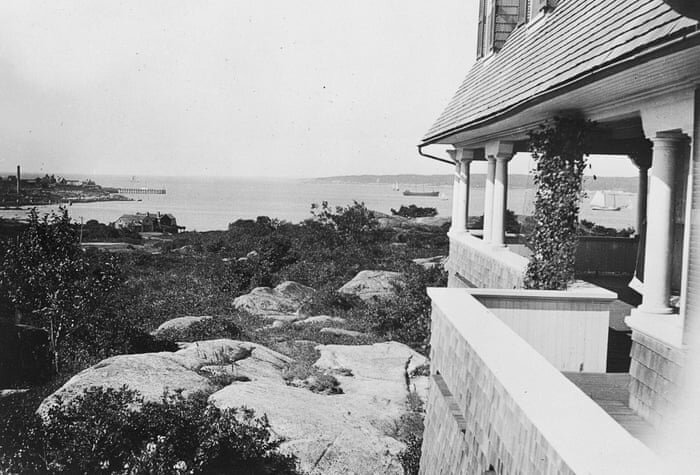Privateersman Jonathan Haraden
The American brigantine Tyrannicide, 14 Guns, 1776, by Patrick O’Brien 2021.
Greek philosopher Heraclitus’s maxim “character is destiny” applies to this most famous and intrepid Yankee privateer Captain in America’s War for Independence, and to his extraordinary Haraden family of America’s oldest seaport, Gloucester, Massachusetts.
Jonathan Haraden left the fishing port of Gloucester as a boy to work for Salem merchant George Cabot. He answered the call for opportunity, service, and adventure. He became a soldier and then a sailor in the Massachusetts State Navy as First Lieutenant of sloop-of-war Tyrannicide in July 1776. He captured many prizes and became her commander in 1777. After a string of victories, he took command of the privateer brig General Pickering the next year. He was captured in the West Indies, escaped, and, in 1782, took command of privateer vessel Julius Caesar.
Jonathan Haraden
Tributes to him from both sides of the Atlantic read like Ian Fleming’s fictional persona, Commander James Bond of the British Royal Navy. The many characterizations of hawkeyed Jonathan Haraden included intrepid, coolheaded, cunning, easygoing, of dry wit, shrewd, cagey, audacious, and indomitable. His seamanship was impeccable, his judgment infallible.
His very name inspired fear on British ships, and many fell prey to his legendary bluffs. “Haraden had the reputation of being one of the most intrepid commanders known even to Salem ship lore. It has been said of him, that amid the din of battle he was calm and self-possessed. The more deadly the strife, the more imminent the peril, the more terrific the scene, the more perfect seemed his self-command and serene intrepidity. He was a hero among heroes, and his name should live in honored and affectionate remembrance (Maclay, page 139). He took over a thousand cannon from British vessels in sea battles, taking on one, two, and three enemy ships at a time. The prizes, weapons, powder, ammunition, and goods he procured were essential to the American war effort.
The greatest number of colonial privateers came from the seaside towns of Essex County, Massachusetts—from Gloucester, Ipswich, Essex, Beverly, and Salem to Marblehead. On the eastern seaboard, Massachusetts had the most vessels designed for deep waters.
Since privateers were privately owned, the records are scattered. While estimates vary, some 3,000 colonial privateer vessels, carrying over 70,000 men, were active compared with the Continental Navy’s fifty-three to sixty-four ships and 3,400 men.
To hold the burlap-bound logbooks with eighteen-by-twelve-inch-wide parchment pages of the Tyrannicide and General Pickering at the Peabody Essex Museum library is quite thrilling.[1] Captain Jonathan Haraden’s entries in perfect cursive taken before, during, and after sea battles tell of a most steady hand and unruffled demeanor.
John Phillips
His great-grandfather Edward sailed from Edburton, Sussex, England to Massachusetts in 1635 and first settled in Ipswich. He came to Gloucester in 1657, bought property where only a wooden fishing-stage had been set up to cut and salt fish. That area became Planter’s Neck along the Annisquam tidal river and estuary, which separates Cape Ann from the mainland to the west. Annisquam became a prosperous fishing and shipbuilding community; it is now a scenic neighborhood of Gloucester.
Jonathan’s grandfather was a ship’s captain, as was his uncle, Andrew Haraden, also from Annisquam. Andrew encountered the notorious English pirate John Phillips, who ravaged thirty-four vessels off the New England coast—four of them from Gloucester. Phillips took ships of his liking and conscripted their crews into piracy. He took the fishing sloop Dolphin, skippered by Captain Mark Haskell of Gloucester, in August 1723, off Newfoundland. On board was a young man from Ipswich named John Fillmore, who was pressed to continue the pirating. But pirate Phillips did not know what he was in for when he captured the new sloop Squirrel of Annisquam, commanded by shipwright Andrew Haraden.
Andrew took the Squirrel out for a sea trial as it was nearly completed. Phillips attacked near the Isles of Shoals and, having once been a ship’s carpenter himself, appreciated the fine workmanship of Haraden’s sloop. He wanted the Squirrel for himself and forced Haraden and his men to complete their finish work. During this time, Haraden plotted with John Fillmore to mutiny. In the scuffle of divided loyalties, Captain Andrew Haraden landed his adze on Captain Phillips’s neck, killing him. The pirate’s body was thrown overboard after the crew severed his head and nailed it to the mainmast. Phillips’s head was stored in a pickling bottle as evidence for the Boston court, and the remainder of Phillips’s crew were held prisoner. Haraden and his men were absolved of any wrongdoing, and Fillmore was found not guilty and redeemed in spite of his youthful collusion with Phillips.[2]
Jonathan’s younger cousin, Nathaniel Haraden, was another extraordinary Gloucester man of destiny for his role with the famed frigate Old Ironsides. The navy tribute to him reads, “In Honor of an Intrepid Son of Gloucester, Nathaniel Haraden, Sailing Master of the U.S. Frigate Constitution, and Commended for Gallantry in Action at the Siege of Tripoli, August 3, 1804.”
Nathaniel also kept meticulous logbooks while serving on the storied Constitution, which provided the only firsthand accounts of what happened in its important sea battles and movements, particularly during the turmoil with Barbary pirates in 1804. Nathaniel acquired the nickname “Jumping Billy Haraden” because he pounced about the vessel much like the cannons (known as Jumping Billys) did when fired. When possible, he made adjustments in her riggings and ballast to improve speed and agility. In later years, when “Old Ironsides” lay rotting in a navy yard, Jumping Billy Haraden restored her. He knew the ship better than any captain who sailed her, and his seamanship earned the ship’s favor on the high seas. He, too, was as intrepid as Jonathan, but with a bit more excitability!
Letter of marque
Answering the call of service in July 1775, Jonathan Haraden enlisted in the militia after the American Revolutionary war broke out in the 19 April siege of Boston when colonial militia surrounded British soldiers and deprived them of supplies. British Generals Thomas Gage and Samuel Graves sent raiding parties along Massachusetts coastal towns and farms to take what they needed. One of the earliest skirmishes of the revolution was the harassment of two Gloucester schooners returning from the West Indies in August by Royal Navy Captain John Linzee of the sloop-of-war HMS Falcon. The British captured one of the schooners and, firing her guns, chased the other into Gloucester Harbor. Local fishermen and farmers won the day by luring the Falcon close to shore of the seemingly quiet harbor, and emerging with small arms and one swivel gun.
Jonathan’s distinguished career in Salem took place in an extraordinary time of merchant ships (engaged in lucrative triangle trades in the Atlantic) and privately owned commerce raiders or privateers. Letters of Marque and Reprisal were first issued upon petition of a subject who complained of injustice by a foreign entity. England began this practice in 1295 under Edward I. In America, the first armed vessels commissioned under the authority of the state were designated privateers as distinguished from the Letters of Marque given to merchant vessels authorized to resist aggression and take incidental enemy vessels that gave them chase. Privateers on the other hand were armed heavily and their primary purpose was to take prizes. That became Jonathan Haraden’s destiny, but the money game was for others.
Privateer and Letter of Marque shares were traded much like stocks today. Even sailors’ shares were negotiable like stock and commanded a high or low price according to the reputation of the vessel, the skill of the captain, the season, or the needs of the seller. The spirit of gaming and inflated currencies made for wild speculation. The prizes enriched owners and communities. Initially ten guns on an armed schooner were considered significant, but as investment poured in, vessels with up to twenty-six guns and 150 men became the norm. Congress frequently called upon the privateers.
In early days of the Revolutionary War any vessel could be converted into a war craft as the craze for privateering touched all classes and professions. Even armed sloops and fishing schooners got in on the action. On 1 November 1775, the Massachusetts Legislature passed an act for a council to commission Letters of Marque and Reprisal to any person or persons who outfitted and equipped a vessel (at no expense to the state, of course) to defend the colonies with broad authority to take all enemy vessels. Deserters from the Continental Army often enlisted on these privately armed vessels, but that practice was soon banned. This made the privateers more independent and powerful, awash in prize money.
A precious 1908 book, The Ships and Sailors of old Salem by Ralph D. Paine, was engagingly written and informed by firsthand accounts of the period. Paine provided an exceptional account of Jonathan Haraden in a sea battle with his perfect sense of timing to pull alongside an enemy vessel and make his demand, “Haul down your colors, or I will fire into you.” In the spring of 1780, Haraden cruised off the shores of Bilbao in northern Spain loaded down with a cargo of sugar. Just before dark he spied the much larger, heavily armed British privateer Golden Eagle. Haraden pretended to retreat, but reversed course in the night and stealthily pulled his General Pickering alongside the vessel. Through his speaking trumpet, he demanded the enemy to “surrender or be sunk.” His men took possession and headed into port with their prize. When they neared a large frigate with British colors, the captured commander of the prize ship became jubilant and told Haraden she was the privateer Achilles with forty guns and 150 men.3
Broad Street Cemetery, Salem, Massachusetts, USA. Also known as Lawes Hill Burial Ground.
Haraden understood he was outmanned and outgunned three to one and many of the men now on board were from the Golden Eagle. He convinced eleven of them to fight. With adverse wind conditions, Haraden could not stop Achilles from taking his prize with several of his own men on board, so he took up a defensive position between the shore and a series of shoals. Achilles bore down on General Pickering, but needed to stay clear of the shoals. Cannons roared, but Haraden’s smaller vessel, with its heavy cargo, sat lower in the water. Over a brutal two-hour period, volley after volley of broadsides slammed the hull of the taller vessel as her returned fire shot over Haraden’s rigging. The mighty Achilles retreated. Haraden could not catch up to the wounded but faster enemy and satisfied himself with retaking his prize Golden Eagle. All this action was in full view of 100,000 spectators on the shores of Bilbao and aboard small vessels that came out to watch and cheer the Americans. Haraden was given a parade and carried though the city on the shoulders of townspeople.
When Jonathan Haraden’s crew of General Pickering assailed the Achilles, he instructed his men with small arms to “[t]ake particular aim at their white boot tops!” His men knew to cluster behind their open ports, put water tubs “in place, matches lighted, the crowbars, handspikes and ‘sprung staves’ and ‘rope spunges’ placed in order by the guns.” (Paine, page 83) As they prepared to deliver their first broadside, Captain Jonathan Haraden’s perfectly timed orders were relayed in cadence down the crowded low-beamed deck:
Cast, off the tackles and breechings.
Seize the breechings.Unstop the touch-hole.Ram home wad and cartridge.Shot the gun-wad.Run out the gun.Lay down handspikes and crows.Point your gun.
FIRE.
—Paine, 83-84 [4]
Enemy sails and men were shredded and hulls were holed.
In his memorial services, Jonathan Haraden was remembered as a daring and skillful navigator . . . a most intrepid commander, modest and brave. The more imminent the peril, the more perfect was his self-command. A hero among heroes.
In Honor of Nathaniel Haraden Marker.
After his years of service, Jonathan Haraden was a man of modest means whose health deteriorated. His remaining years were spent running a ropeworks in Salem as his livelihood. He made the rigging for the Salem frigate Essex and other vessels at his factory on Brown Street.
This timeline is derived from Frank A. Gardner’s and Ralph D. Paine’s narratives of Jonathan Haraden’s life and some of his sea battles and prizes taken (click to enlarge or download here).
He died in 1803 and was buried at Salem’s Broad Street Cemetery, where Salem merchants and wealthy families of the time were laid to rest. A spiked iron gate leads to a grassy dome of thin slate and granite monuments. Jonathan’s grave sits in the southeast corner of the square of old flat tombstones with humped heads and shoulders aligned in straight rows at their bases. His stone reads:
Jonathan Haraden. b. November 11, 1744, d. November 23, 1803 age 59.
‘A distinguished naval commander in the war with Great Britain.’
Captain Haraden’s legacy lived on with two United States Navy destroyers christened “USS Haraden”—one in the First World War and the other in the Second World War.
Gloucester will celebrate its 400th anniversary as the first permanent settlement of the Massachusetts Bay Colony in 2023. Its maritime culture survives in its people and working waterfront of today. Rudyard Kipling’s 1897 novel Captains Courageous was informed by his interviews with an old salt from Gloucester’s fishing fleet. Kipling’s goal was to capture their indomitable spirit. The Haradens of Gloucester were the epitome of courageous captains from the age of sail. Character is Destiny.
Notes
1. The Peabody Essex Museum is the successor to The East India Marine Society, an organization of Salem captains who sailed beyond either the Cape of Good Hope or Cape Horn, gathered natural and manmade curiosities from around the globe, and founded the museum over 200 years ago. Its library is a major resource for maritime history and art, New England life, Native American history, and collections from Asia and Pacific islands.
2. Fillmore murdered two of his men who abandoned ship when he directed pirating raids for Phillips. Fillmore led the raid on the Squirrel. He saw his chance to escape pirate life by joining Haraden to terminate Phillips’s villainy. History considered Fillmore a hero and his great-grandson, Millard Fillmore, became the thirteenth president of the United States; President Fillmore was not regarded well by history.
3. At the time of this attack, the General Pickering was 180 tons and armed with fourteen six-pounders with a crew of forty-five men and boys.
4. Paine’s book is one of the most complete accounts of the history, ships, traders, merchantmen, pirates, patriots, and privateers from the Revolution to the War of 1812. Salem and the communities of Essex County in Massachusetts played major roles. This widely cited book was compiled from logbooks, sea journals, and previously unpublished manuscripts. Chapter V is dedicated to Privateer Jonathan Haraden.
For additional information
Garland, Joseph E. The Fish and The Falcon: Gloucester’s Resolute Role in America’s Fight for Freedom. The History Press, 2006.
Gardner, Frank A. Garner. “Captain Jonathan Haraden,” The Massachusetts Magazine II:4 (October 1909), 191-199. [page numbers for the online version are 403-418].
Maclay, Edgar Stanton. A History of American Privateers. D. Appleton, 1899.
Paine, Ralph D. The Ships and Sailors of Old Salem: The Record of a Brilliant Era of American Achievement. Outing Publishing, 1908.
James Masciarelli is a Gloucester/Cape Ann lover/resident with great affection for all things Gloucester—maritime culture, geology, fishing, boating, kayaking, rowing dories, sense of place, history and time.
His blue-collar background from factory work to social work director, led to HR exec roles in high tech companies. Founded, grew and sold premiere retained executive search firm. Wrote thought leading articles for professional publications. Invested/guided early-stage tech startups in the Boston area, served on several boards
Daily Mantra: living, loving, learning. Author of PowerSkills-building top level relationships for bottom line results. His adventure novel Beyond Beauport out of Gloucester is available now.





















